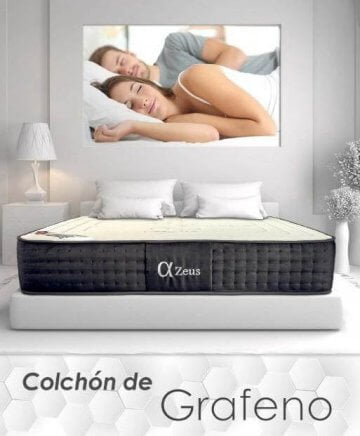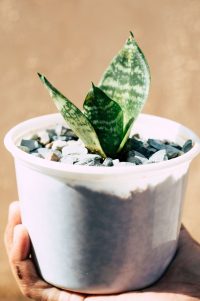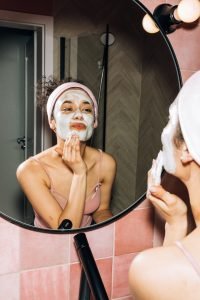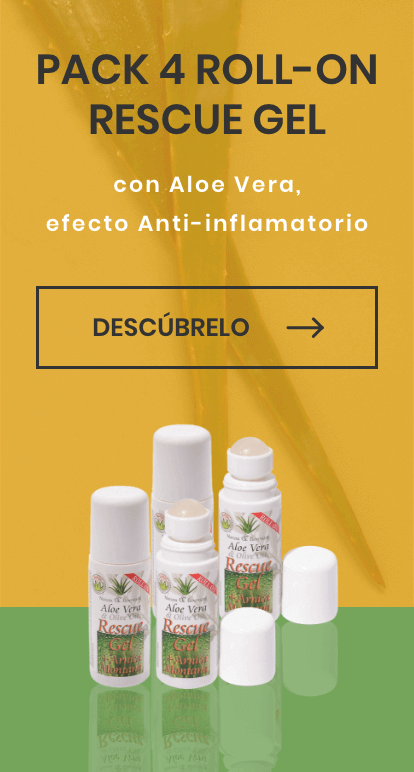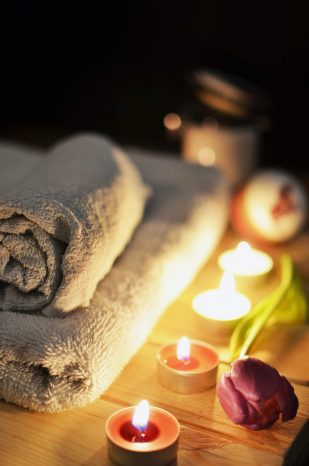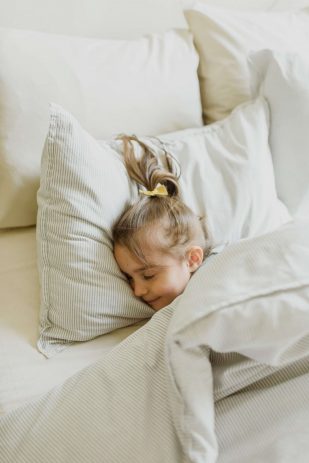The benefits of having a viscoelastic mattress for your well-being depend on many factors, which we will explain below.
The viscoelastic material is mainly composed of high performance polyurethane foam, the rest of the components and materials, as well as their quantity and density will be determined by the quality and technology applied in the development of the mattress.
We will understand its properties better when we know where and for what purpose this material was developed. The viscoelastic material was developed by NASA in the 60’s, looking for a material that would absorb the heat of the astronauts, because in space they lose or give off a lot of heat, In this way they developed a foam material with a high resilience (ability of a material to deform and return to its natural shape) that reacts to temperature, becoming more rigid in cold weather and softer as the temperature rises, so that if we lie on a viscoelastic mattress it will mould to the morphology of our body due to our body temperature.
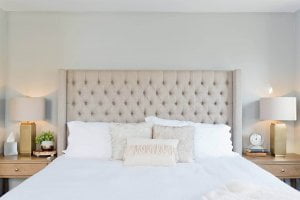
The use of this material did not become popular until the 1990s because until then it was quite expensive and was only used in small quantities in pillows, designed to reduce neck pain.
Thanks to new technologies, both the cost of production and the manufacturing time were reduced.
Adaptability and viscoelastic material properties
Viscoelastic is a material that deforms when a force or weight is applied to it, recovering its original shape when the force or weight is no longer applied (resilience). This means that if we apply this to a mattress, when we lie on it it will deform, adapting perfectly to our body, distributing the weight evenly, eliminating or reducing the pressure points of our body, helping us to have less load, favouring both the comfort and quality of sleep, and helping to prevent muscle and joint pain… This is the most demanded and predominant type of mattress in hotels, massage centres, spa, resorts and spas. It is true that the viscoelastic mattress, due to its ability to adapt to the body, makes it reach a higher temperature, therefore, in order to regulate and maintain the perfect temperature that your body needs, thermoregulatory systems have been created. Rest is always important and that is why these fabrics are so necessary in our mattresses.
Thermoregulation in viscoelastic mattresses
Thermoregulatory systems are special fabrics, such as graphene, carbon or viscogel. These fabrics dissipate heat, not concentrating it in the area where our body is, making them perfect for any season of the year. However, there are still cheaper mattresses without these new technologies that are usually included in high-end or premium mattresses.
The main difference in the price of the mattresses on the market is in the origin, the size of the viscoelastic material, the density and the resistance of the nucleus.
Density and types of viscoelastic mattresses and cores
The density/quantity of viscoelastic is measured in Kg/m3, usually ranging from 20 kg/m3 to 80 kg/m3. The most popular mattresses range between 40 and 60 kg/m3 of density, as from 65 kg/m3 the heat dissipation becomes progressively more complicated, As the material becomes very dense and not very breathable, there is little air circulation, and as a consequence more possibilities of creating fungus, bacteria, viruses and germs, and even the thermo-regulating and anti-bacterial systems are not able to cushion these effects. Therefore, as we increase the density we increase proportionally the comfort, warmth and lack of breathability. Always recommended for adults with a density of more than 40 kg/m3 and a minimum thickness of 2 cm.
In some cases high density mattresses are offered, but we must pay attention not only to the density but also to the volume of the viscoelastic material. If we have a mattress with a high density but only 1 cm or 2 cm of viscoelastic material, we will be warmer, but not as comfortable as in a mattress with 3 cm or more viscoelastic but with a little less density.
Types of cores
- Springs: spring core recommended for children or people of low weight.
- Foam: foams below 25kg/m3 lower quality and density.
- HR Foam: HR is considered to be foam cores above 25kg/m3 and is the most advanced technique used in high-end/premium mattresses.
The types of viscoelastic mattresses according to the way they are made
- Moulding: the viscoelastic material is poured into a mould where it is pressed and a viscoelastic material with very closed pores is obtained.
- Injected: as its name suggests, the viscoelastic material is injected individually and integrated directly into small moulds integrated into the lower parts of the mattress, achieving a soft and perfect result, very similar to the moulded method.
- Foaming: the viscoelastic liquid is poured onto rails where it expands and gives a more breathable result with more open pores.
Manufacture and viscoelastic materials
Some viscoelastic materials are manufactured or produced with natural or even organic or ecological materials such as Aloe vera, green tea, soya, … the use of this type of materials improves the quality and qualities of the final product, avoiding the use of petroleum derivatives as far as possible for their manufacture, which are used to a greater extent in more conventional viscoelastic. Equally important is the place of manufacture and origin of the mattress materials, as some national and international brands sell mattresses of lower quality, such as those from China under their own brand, using cheap materials of lower quality, not to mention the controls of materials and manufacturing, as in Europe they are much more demanding.
That is why our mattresses are manufactured 100% in Spain and have been approved in the most rigorous quality controls and tests. We have more premium models than others, but that also depends on the economic possibilities and/or the customer’s preferences. However, all of them certify manufacture in Spain and have the characteristics of premium mattresses.
So what are the benefits of having a viscoelastic mattress?
- Its lifespan is longer than that of a spring mattress.
- They are more resistant to viruses, mites and bacteria.
- It helps the physical well-being, perfect for all those people with ailments in the spine, bones, joints and muscles.
- Thanks to their adaptability, they are the best mattresses for sleeping with a partner, as they do not cause movement when the person next to you moves, especially if you choose mattresses with a separate bed.
- We reduce stress and pressure on the body thanks to the resilience of viscoelastic.
- It helps wellbeing by supporting health and offering us a feeling of greater rest, helping us to alleviate the characteristic aches and pains that we usually suffer when we wake up.


 TAKE CARE OF YOURSELF
TAKE CARE OF YOURSELF HOME
HOME FITNESS
FITNESS






